For the best part of my life, I’ve enjoyed every aspect of small boats, with one exception: climbing in and out of them while they’re on their trailers, whether at home when working on them, or at the ramp loading gear in and out or raising or lowering a sailing rig. I’ve been able to board three of my trailered boats by getting a tenuous footing on the trailer frame and then smearing my frontside over the gunwale, but it’s a painful process. Clambering out of the boat can be even worse because I can’t see where I’m putting my foot; I lost my toehold once and spilled onto the concrete driveway. I’ve used a milk crate as a step, but it’s not quite tall enough and can be unsteady on the lawn. I made ladders for two of the boats and, although they work, they are heavy, bulky, and take up a lot of room in my shop. I don’t take them to the launch ramp.
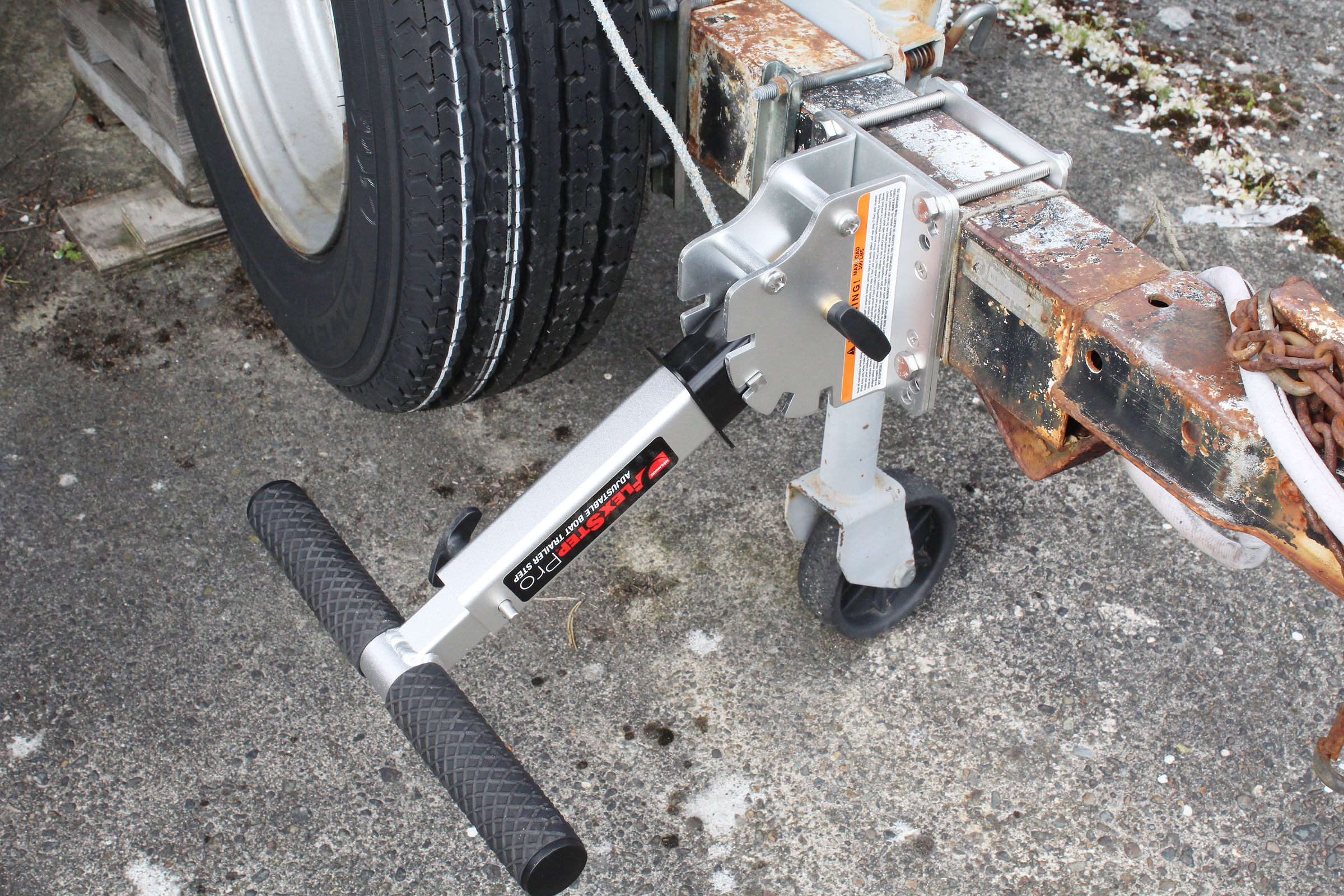 Photographs by the author
Photographs by the authorThe FlexStep is designed to fasten to trailer rails. Here it is mounted on a rectangular tube tongue facing downwards. While the step, mounted to pivot downward, makes it easier to climb up onto the tongue, this wasn’t where I most needed the leg-up. The arrangement did, however, show the intended installation.
When I happened upon the FlexStep Pro while browsing the web, it looked like just the thing I needed. It’s an adjustable step with an aluminum mounting bracket that attaches to the trailer frame, so there’s no chance it will roll out from under me like a milk crate might if I put my weight too close to its edge. The receiver that supports the step can extend from 17″ to 21″ in four increments and is locked with a stainless-steel quick-release pin with a spring-loaded ball lock. The arm rotates 90 degrees in the bracket and locks in one of four positions.
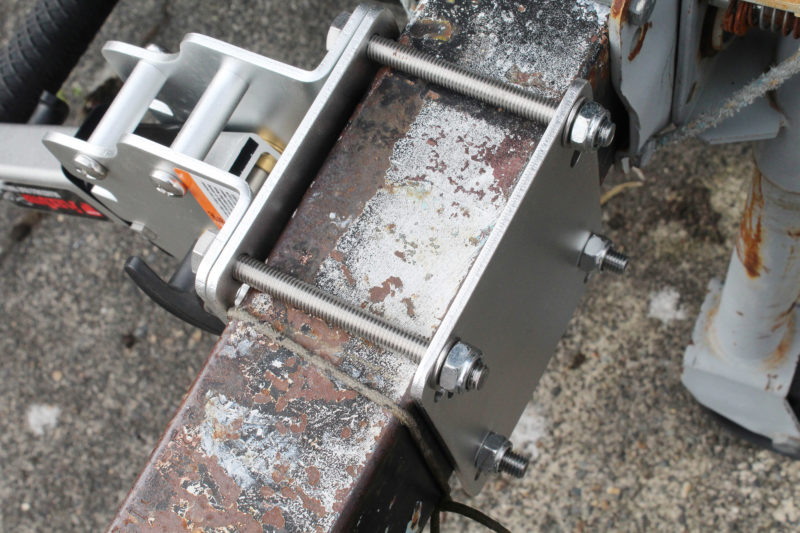
An aluminum backing plate and four stainless-steel bolts with nylon lock nuts anchor the FlexStep to the trailer frame. The installation hardware includes two pieces of vinyl, which keep the top bolts from damaging the finish on the trailer. (The finish here didn’t require that measure of care.)
The 5-1⁄4″ × 6-3⁄8″ backing plate can accommodate trailer beams up to 5″ deep, and the 4-1⁄4″ × 3⁄8″ bolts can span a beam about 3-1⁄2″ wide.
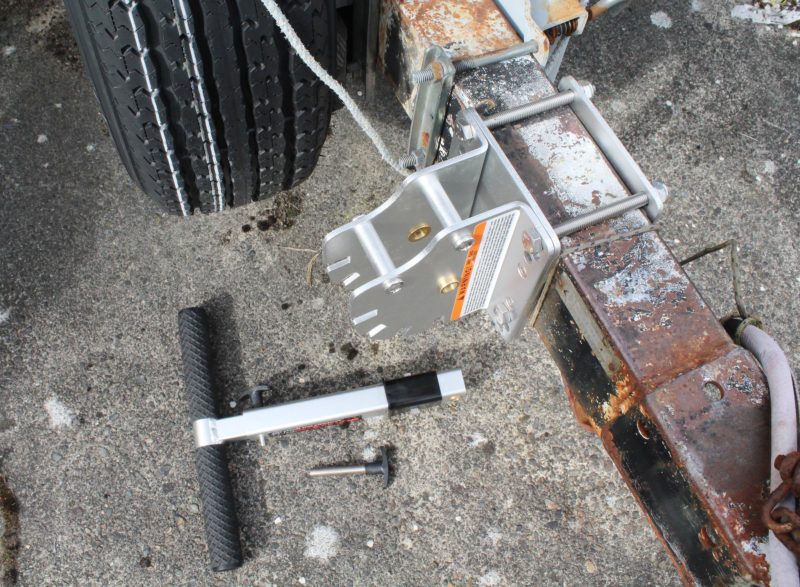
The manufacturer recommends removing the step from the bracket before going out on the road. Pulling the locking pin frees the step.
The manufacturer recommends removing the receiver (with the step) when towing the trailer and while launching or retrieving the boat at the ramp. It’s easy enough to do and assures the step isn’t lost on the highway or in the way of the boat at the ramp.
Where—and whether or not—the FlexStep can be mounted depends on the clearance between the boat and its trailer. Our Escargot canal boat covers the trailer bed and the beams from the bed to the tongue, so the only place I could mount the step was on the trailer tongue.
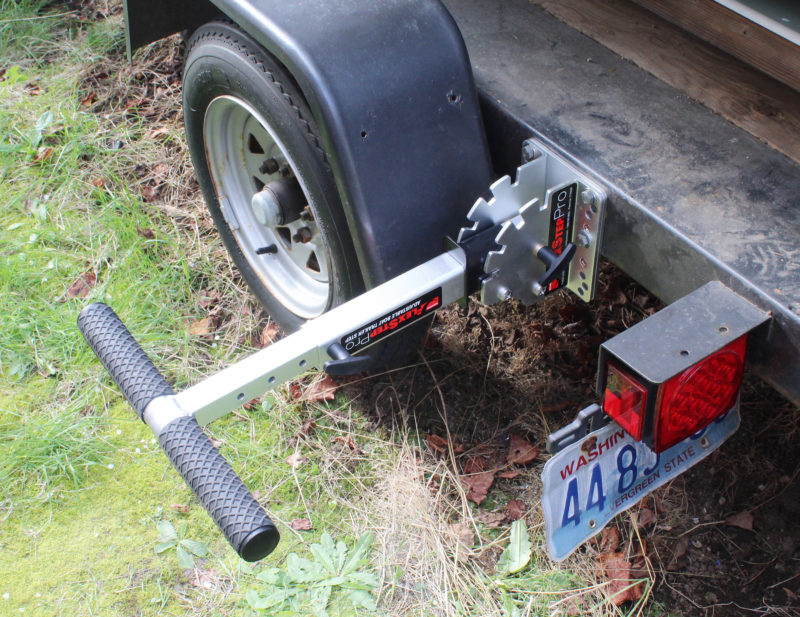
This drift-boat trailer was where I needed the step to get aboard my Caledonia Yawl. The bolts and backing plate supplied with the FlexStep couldn’t span the wide rails or place the top of the mounting bracket flush with the trailer deck, so I drilled into the rail and the bracket and joined them with short bolts.
While that could be useful for some boats, it was my Caledonia Yawl that would benefit most from the step. The yawl rests on a flat drift-boat trailer that doesn’t have a box-beam frame. Instead, it has steel channels that support a wooden deck. My only option was to drill four holes in the side of the channel and two new holes in the bracket for a set of four shorter 3⁄8″ bolts that I had on hand. It was easy to drill the two additional holes in the aluminum bracket. The four holes in the trailer’s steel took more time and pressure. After the bracket was installed, the receiver was quick to install with the larger locking pin.
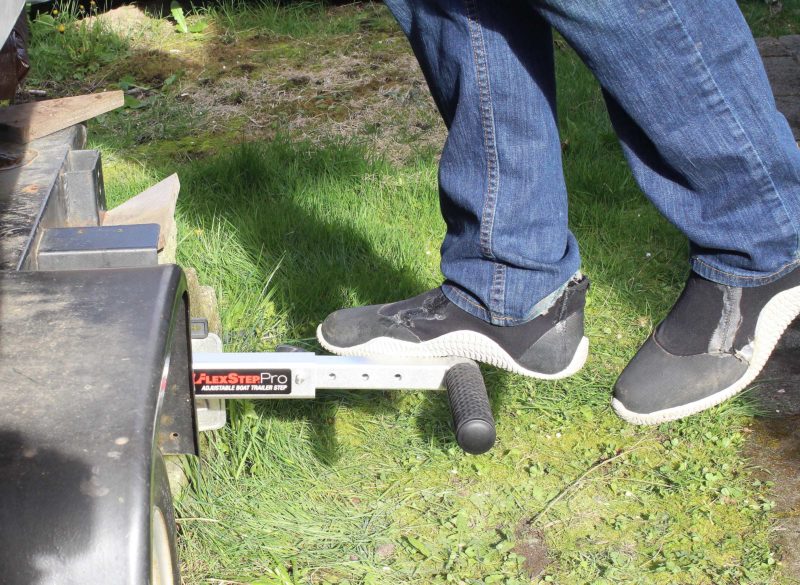
The step’s distance from the trailer and boat can be adjusted by sliding it in and out of the bracket and pinning it in the desired position. Once fixed in place, the step felt solid and strong and showed no sign of tipping or twisting when all the weight was shifted to one side.
Boarding the Caledonia is now a breeze. The step is at just the right height for me to climb over the gunwale without having to put my weight on it. The rubber covers on the step provide a non-slip surface, and while there is slight play in the receiver, the step is solid and secure even with all my weight on one side.
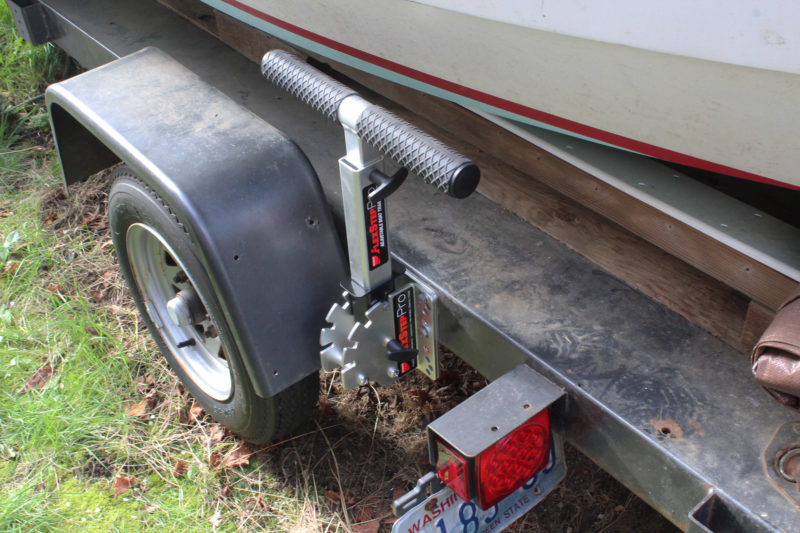
The step can be retracted and pivoted to the vertical position, keeping it handy but out of the way when this boat is in storage at home.
The FlexStep Pro will change the way I ready the Caledonia for sailing. Instead of dropping the rig and gear into the boat and rushing to organize it at the dock while other boats are waiting, I’ll be happy to rig it in the parking lot where I can take my time and comfortably get in and out of the boat as many times as it takes.![]()
Christopher Cunningham is the editor of Small Boats.
The FlexStep Pro is made by Megaware and sold direct from the manufacturer for $159.95. There are several marine hardware stores and online retailers that offer the FlexStep at lower prices.
Is there a product that might be useful for boatbuilding, cruising, or shore-side camping that you’d like us to review? Please email your suggestions.
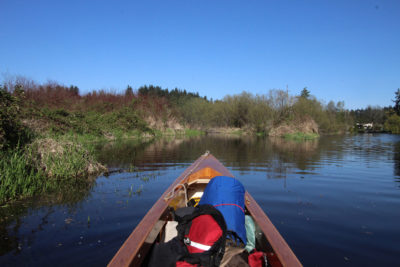
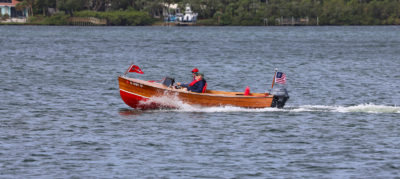
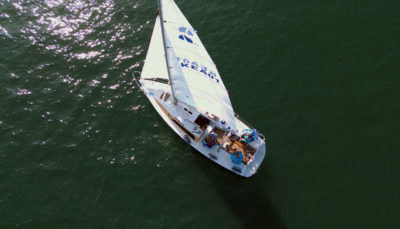
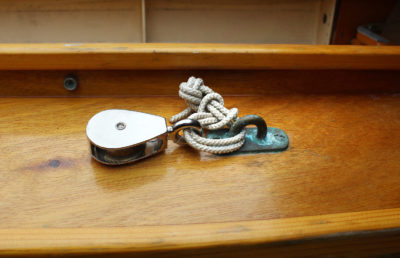
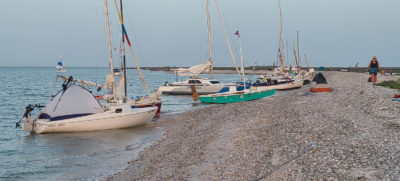
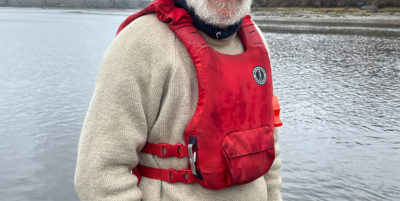
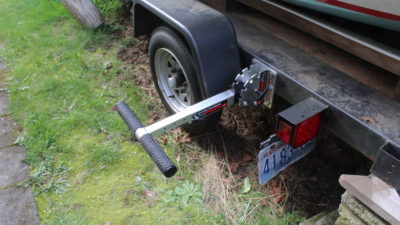
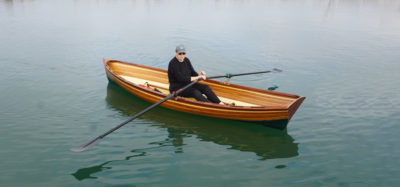
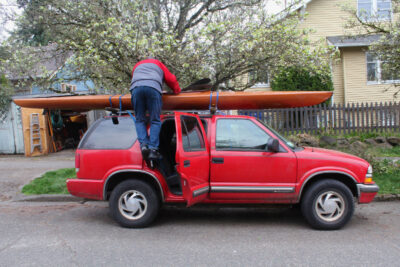

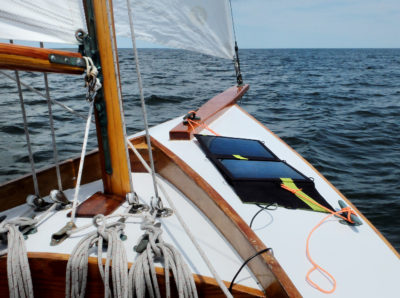
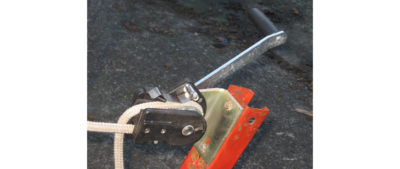
Looks like a good way to wipe out a bicyclist if ever left down on the passenger side.
The instructions include this warning: “For safety purposes, the FlexStep Pro must be removed when moving the trailer or loading the boat on or off the trailer.”
A step is not only a great idea, but an essential part of setting up a boat for launching. I climb in and out of my Caledonia yawl many times. I didn’t know about these steps that you’re reviewing, but also being fairly cheap, I have added 2×6 cross beams to all of my trailers by using big U bolts to secure across the trailer at the spots I most need a step. They don’t protrude much more than the beam of the boat so there’s not much of a safety problem. I also add 2×6 planks length-wise to help me walk down the length of the trailer without balancing on the channel beams. Both of these modifications have been a real boon to setting up and launching quickly and safely.